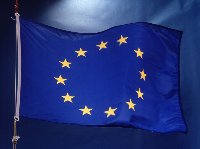
 |
SCHENGEN |
|
Schengen is
Part of Europe's history In a first phase a High Authority was to monitor the German-French coal and steel production. Other members like Belgium, the Netherlands, Italy and Luxembourg joined the initiative. On 25 July 1952, the European Coal and Steel Community (ECSC) entered into force and has its provisional seat in Luxembourg. In the following years, Luxembourg became the seat of other European institutions. Along with Strasbourg and Brussels, it is one of the European capitals today. On 25 May 1957, the six founding members signed the Rome Treaties on the creation of the European Economic Community (EEC), which only received fresh impetus in 1985 when Jacques Delors, the then President of the European Commission, decided to implement the Single Market. It was in Luxembourg where the heads of state and government fixed th date of 31 December 1993 to launch the Single Market. In spring 1985, Robert Goebbels, the then Luxembourg Undersecretary of State in the Ministry of Foreign Affairs, called Fernand Weber, the mayor of the commune Remerschen, to inform him that the agreement on the abolition of border controls of persons would be signed in Schengen. On 19 June 1990, a convention on the application of the Schengen Agreement was signed in the same three-border region. It laid down the accompanying measures for the implementation of the Schenghen objectives. The Schengen Agreement, an "experiment" for a citizens' Europe without frontiers has become part of today's European Union. It may be considered as a milestone of the European post-war history. |